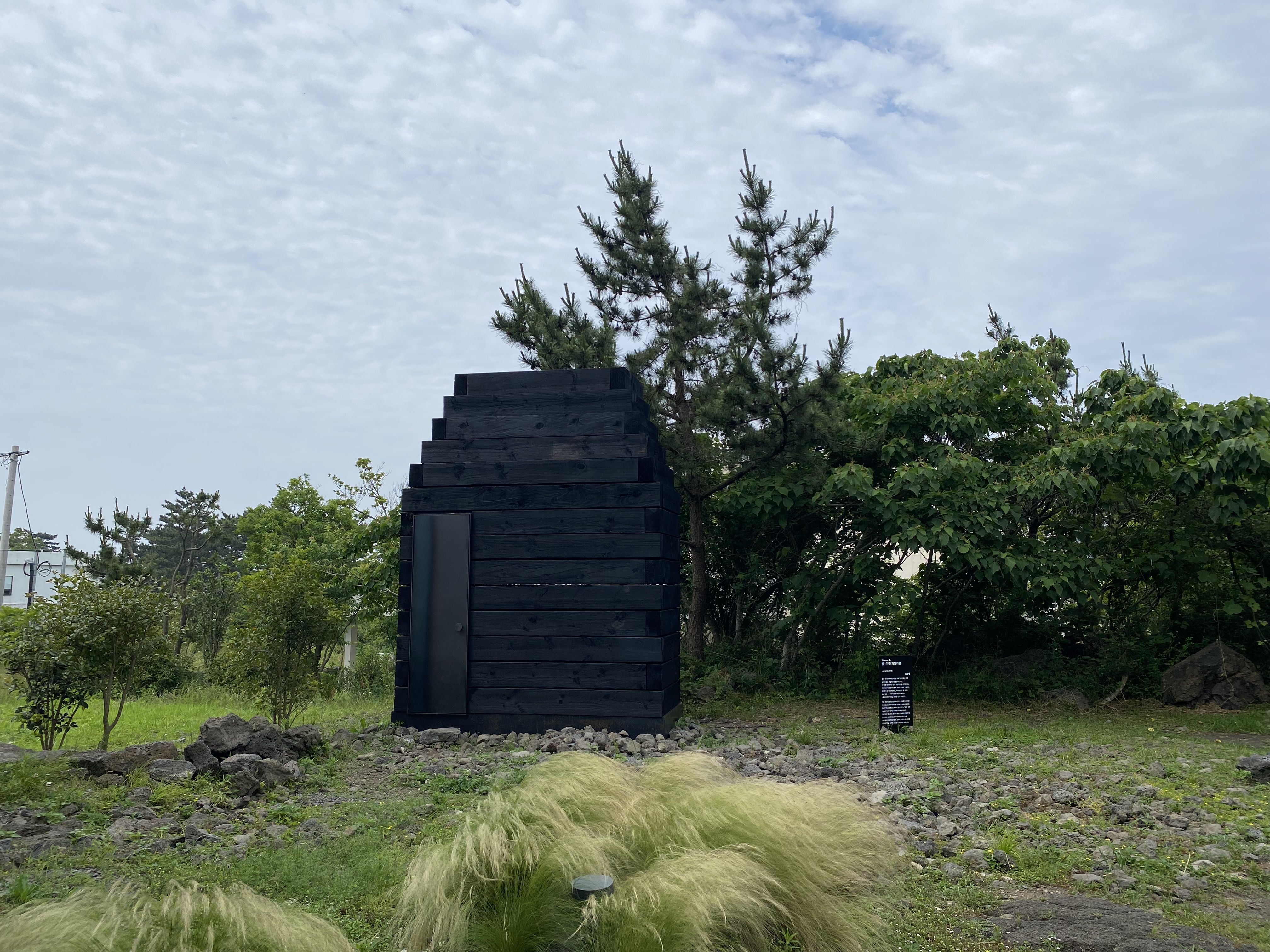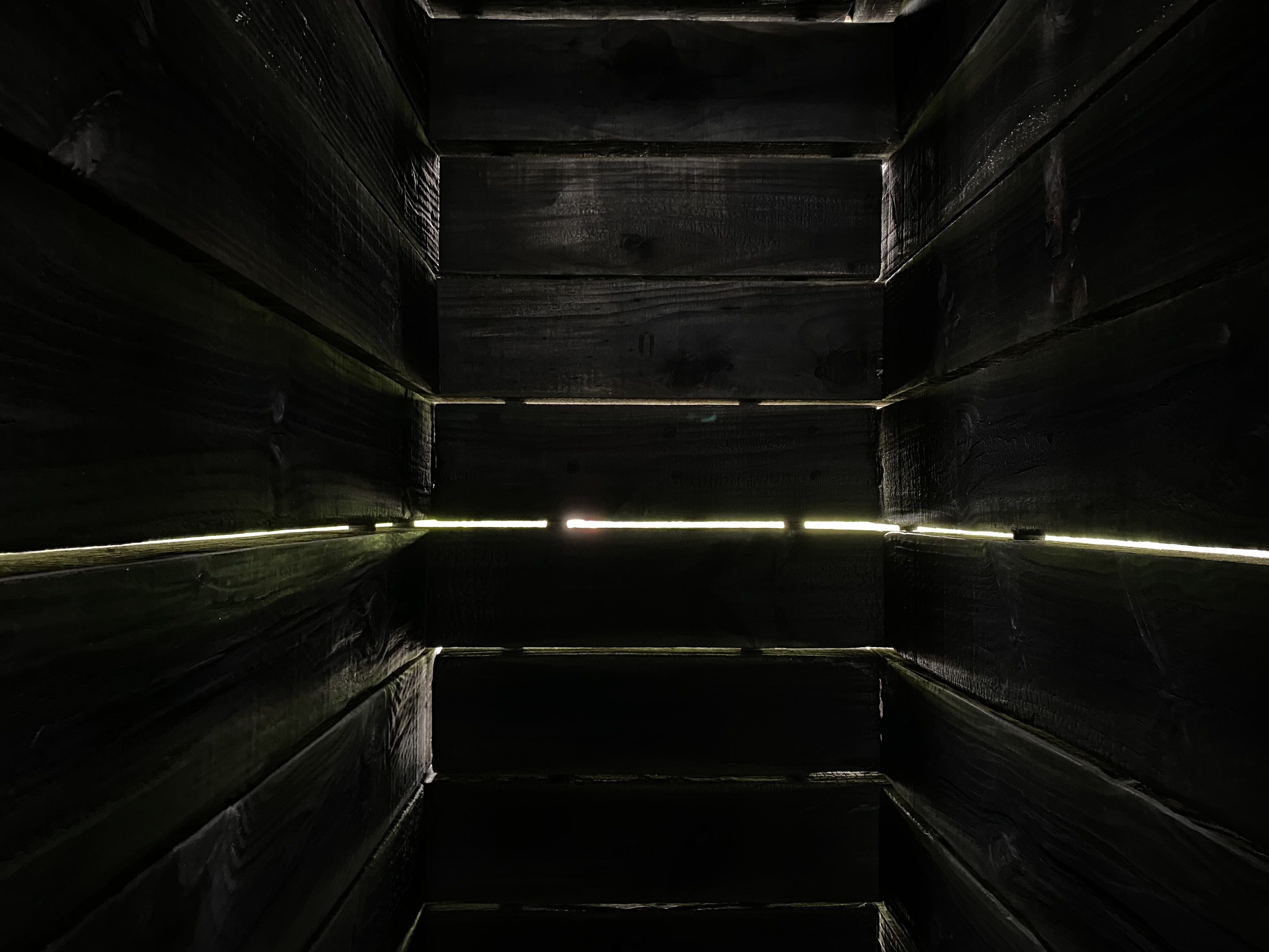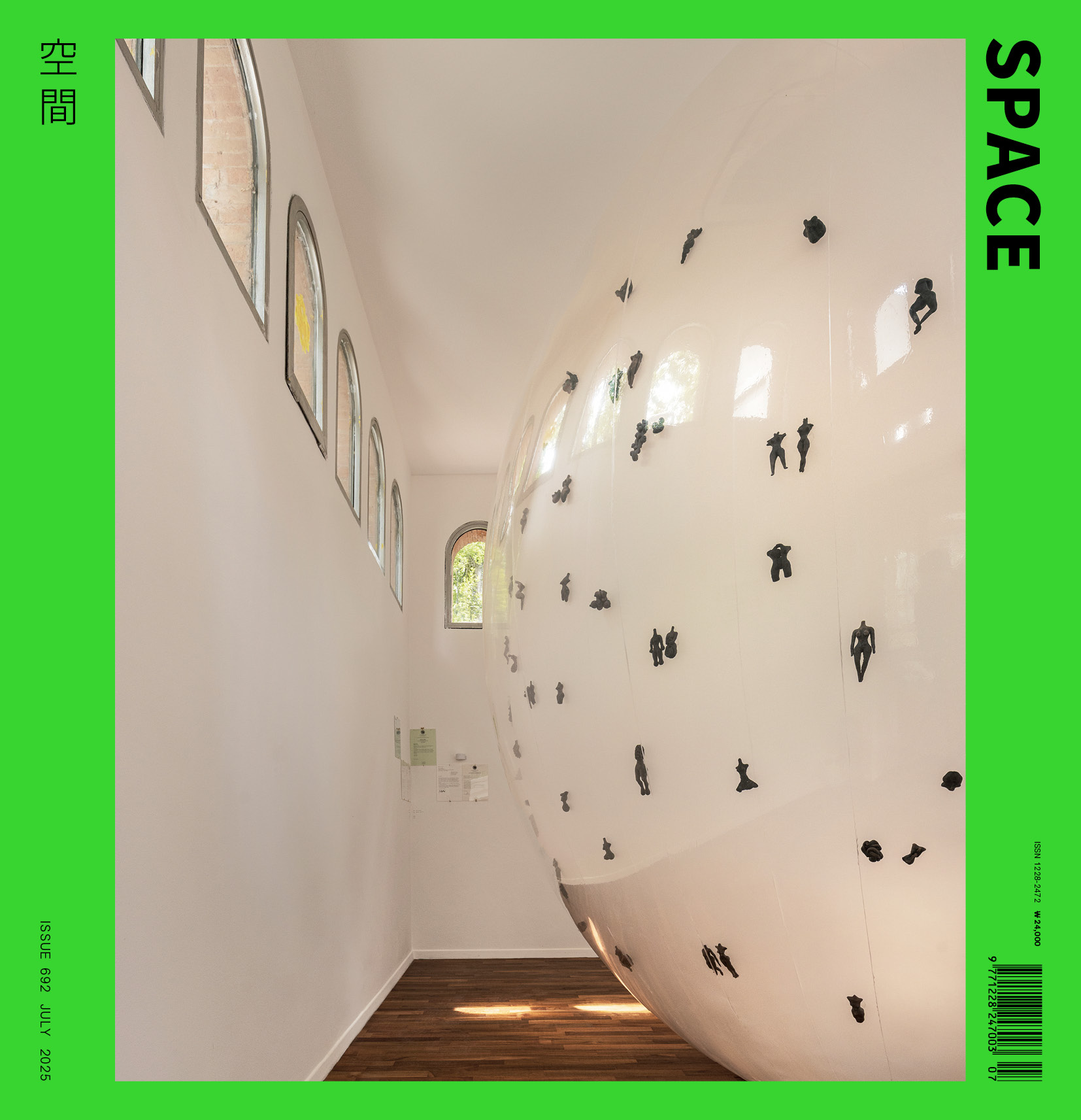SPACE July 2025 (No. 692)

Installation view of architectural pavilion The Fourth Nature by Kim Youngbae / ©Kim Hyerin

Inside view of The Fourth Nature / ©Kim Hyerin
On May 2, the exhibition ‘JEJU PAVILION PROJECT: Weaving the Land’ opened at the ITAMI JUN Museum. With the aim of showcasing the architectural museum’s identity, this exhibition was curated by the programme ‘Museum × Enjoy’ of 2025 Museum Week which is hosted by the Ministry of Culture, Sports, and Tourism and organised by The Korean Museum Association. As a combination of the word ‘land’, which refers to the regionality that Itami Jun (Yoo Dongryong) emphasised and the Jeju dialect for ‘weaving’, the exhibition title ‘Weaving the Land’ presents the idea of weaving nature and pavilion together as one. Through this exhibition, the ITAMI JUN Museum displays various concepts of pavilion ranging from formless pavilions to pavilions with architectural form.
The exhibition is on show in the outdoor space of the ITAMI JUN Museum. The museum, which is located off the main street and facing Gotjawal Forest, is surrounded by a wide rocky area with lava flow marks or ‘ville’ in Jeju dialect. When this rocky formation was discovered during the museum’s construction, the architect and owner of the museum Yoo Ehwa (principal, ITM YOOEHWA ARCHITECTS) adjusted the building’s placement to respect the ville. (covered in SPACE No. 665)
The exhibition begins with the scent pavilion Breath of Ville & Yeokkeundol (Stonewoven) which expresses the seasons and ville via the sense of smell. Holding onto a scented ribbon that is infused with the Breath of Ville created by scent poet Han Seohyoung, the visitors are led through the ville that reflects the hot lava and the traces of time. In various spots of the ville, one can find Yeokkeundol which captures the Breath of Ville. Yeokkeundol, which is made by binding things like lava rocks and cedar wood with cloth, collect or diffuse scent depending on the weather, temperature, and humidity and defines a certain formless space of smell.
At the sound pavilion Sitting in Nature, the visitors can enjoy the sounds of Gotjawal Forest as they sit on sound chairs that repeatedly play Where Rain Touches the Forest and Deep Forest, First Cry. By using directional speakers, the sounds are designed to be exclusively delivered to the person sitting on the sound chair, and this boundary of sound creates a separate space. Visitors can also access various sounds collected from Jeju’s nature via QR codes that are dispersed around the museum. This soundscape project that uses Jeju’s nature as source material and the design and production of sound chairs were respectively done by The Sound Bunker and Color Lab Jeju as a collaborative work.
The architectural pavilion ‘The Fourth Nature’ was selected from a competition co-organised by the ITAMI JUN Museum, Korean Institute of Architects, and Korea Institute of Registered Architects (Jeju). Borrowing inspiration from the Water, Wind, Stone Art Museum, Kim Youngbae (principal, DRAWING WORKS) interpreted the unique natural properties of Jeju in terms of its water, wind, and stone and added light as its fourth nature. Fir logs were used to create a structure that repeatedly expresses the disassembled physicality of ‘stone (museum)’ while the light that flows into the interior through gaps was used to imply the permeability and fluidity of ‘water (museum)’. Moreover, the vibrations caused by the wind blowing in through those gaps capture the property of ‘wind (museum)’. As visitors step into a small pavilion of 1.2m width, 2.8m length, and 3.6m height, they are greeted by a ray of light that seeps into the darkened structure made of burned fir wood. The scent of wood and darkness separates the outside and inside, and the visitors in between are led to experience a sensation of time passing by slowly. In this cramped interior, the outside world is only visible through the light shining through the gap, and the visitors are drawn to sense the fine texture of light that could not be detected in the bright environment outside. This exhibition will be on show until Aug. 31.





